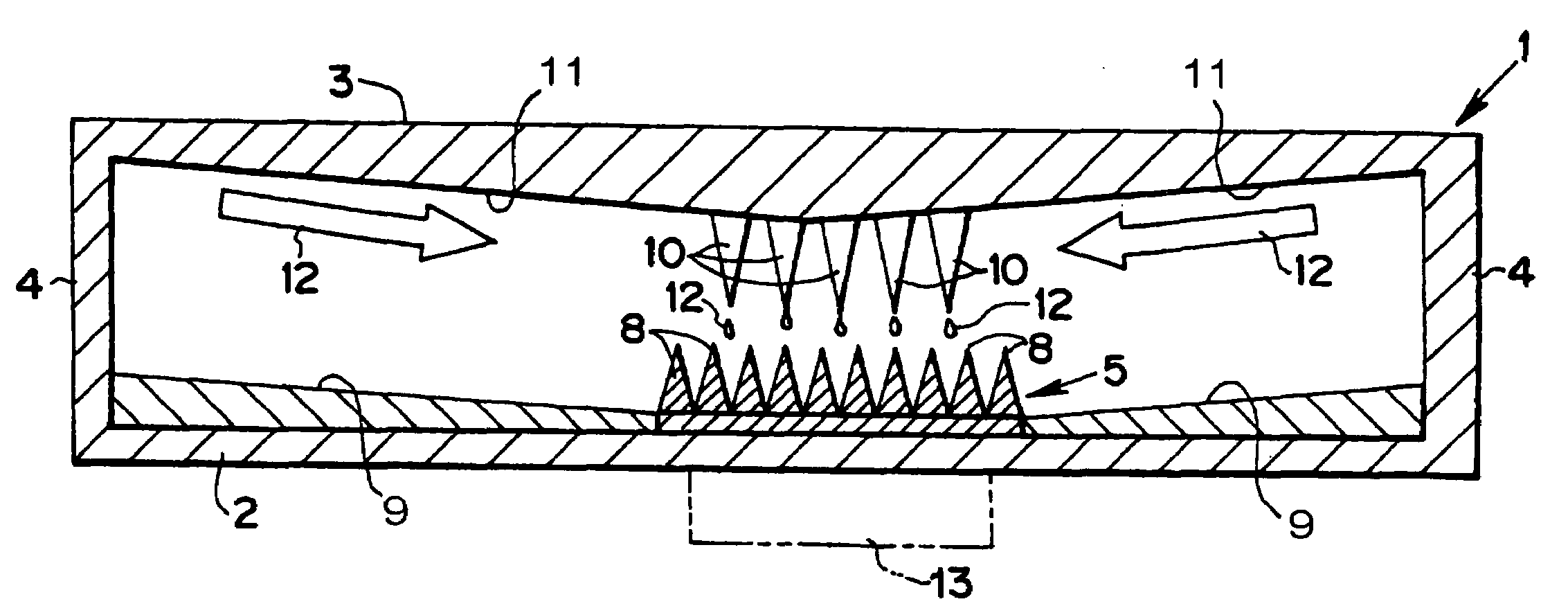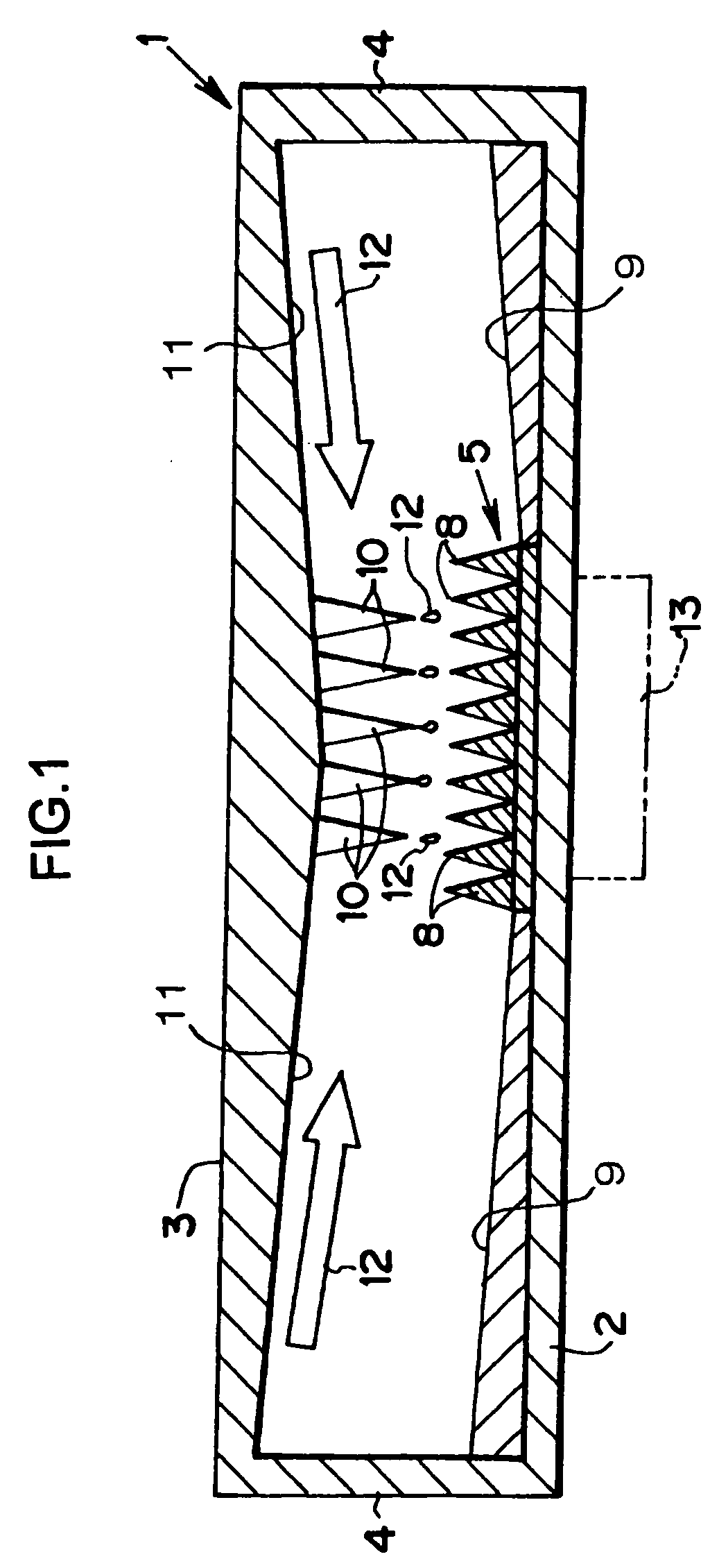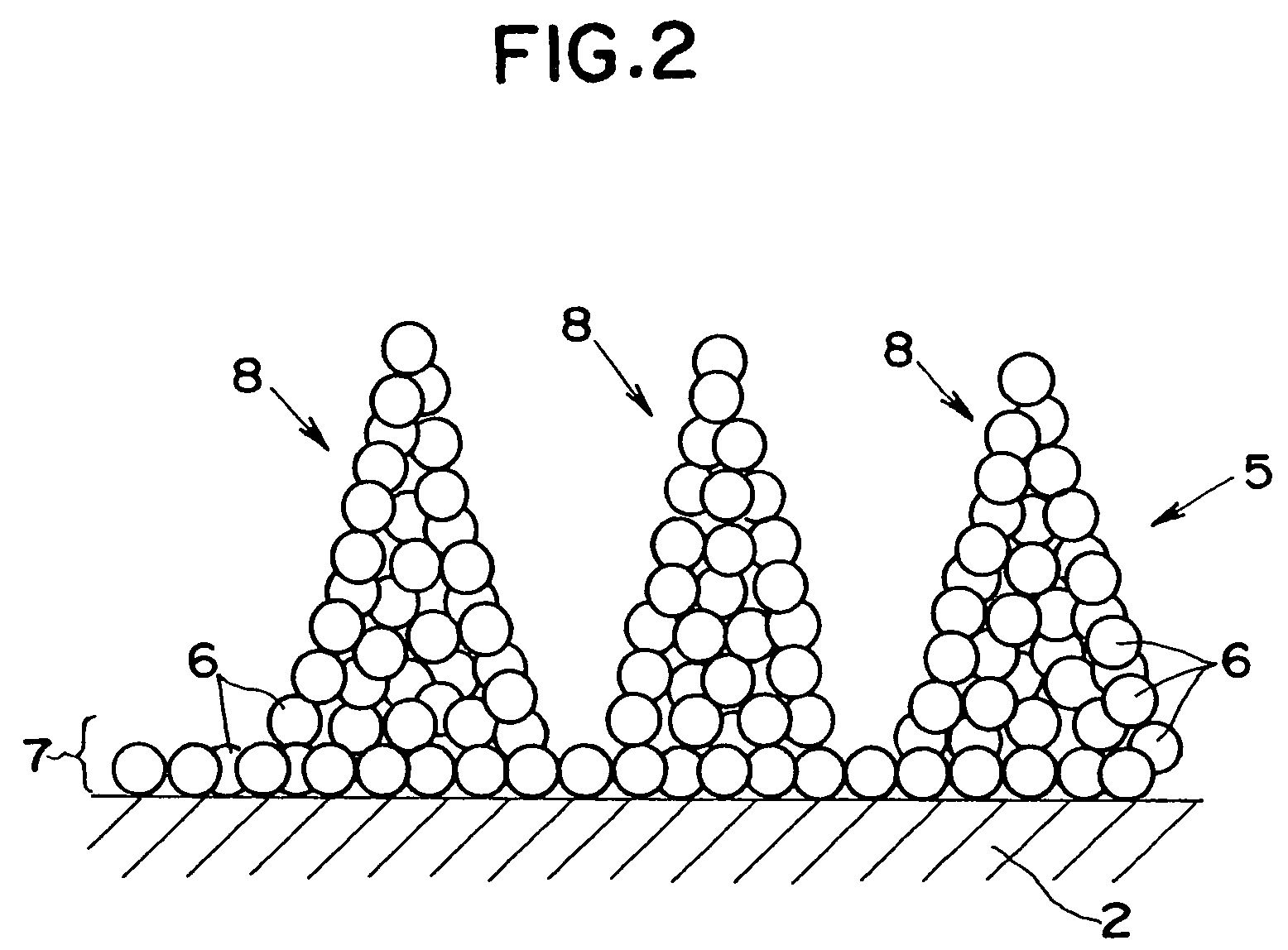Heat transfer device
a heat transfer device and heat transfer technology, applied in indirect heat exchangers, lighting and heating apparatuses, cooling/ventilation/heating modifications, etc., can solve the problems of difficult to form the liquid film of working fluid on the outer circumferential, and insufficient flow rate of working fluid back to the stack, etc., to achieve excellent heat transport performance, facilitate reflux of fluid, and efficient heat transport
- Summary
- Abstract
- Description
- Claims
- Application Information
AI Technical Summary
Benefits of technology
Problems solved by technology
Method used
Image
Examples
Embodiment Construction
[0032]Hereinafter, exemplary embodiments of the present invention will be described. FIG. 1 shows one example of a heat transfer device according to the invention. The heat transfer device comprises a thin container 1 having a rectangular cross-section. The container 1 is made of a metal having high heat conductivity such as copper, and has a sealed structure such that a bottom plate 2 and an upper plate 3, having large planar dimensions, are combined with side plates 4 having a short height. A porous structured wick 5 is placed in the center of an inner face of the bottom plate 2.
[0033]A structure of wick 5 is illustrated in FIG. 2 in an enlarged scale. The wick 5 is formed into a predetermined shape by consolidating particles 6. The particles 6 have excellent hydrophilicity with a fluid, and are composed of a material which does not react with the working fluid, e.g., a copper particle of several hundred micrometers (e.g., around 200 μm) diameter. Those particles 6 are consolidate...
PUM
 Login to View More
Login to View More Abstract
Description
Claims
Application Information
 Login to View More
Login to View More - R&D
- Intellectual Property
- Life Sciences
- Materials
- Tech Scout
- Unparalleled Data Quality
- Higher Quality Content
- 60% Fewer Hallucinations
Browse by: Latest US Patents, China's latest patents, Technical Efficacy Thesaurus, Application Domain, Technology Topic, Popular Technical Reports.
© 2025 PatSnap. All rights reserved.Legal|Privacy policy|Modern Slavery Act Transparency Statement|Sitemap|About US| Contact US: help@patsnap.com



